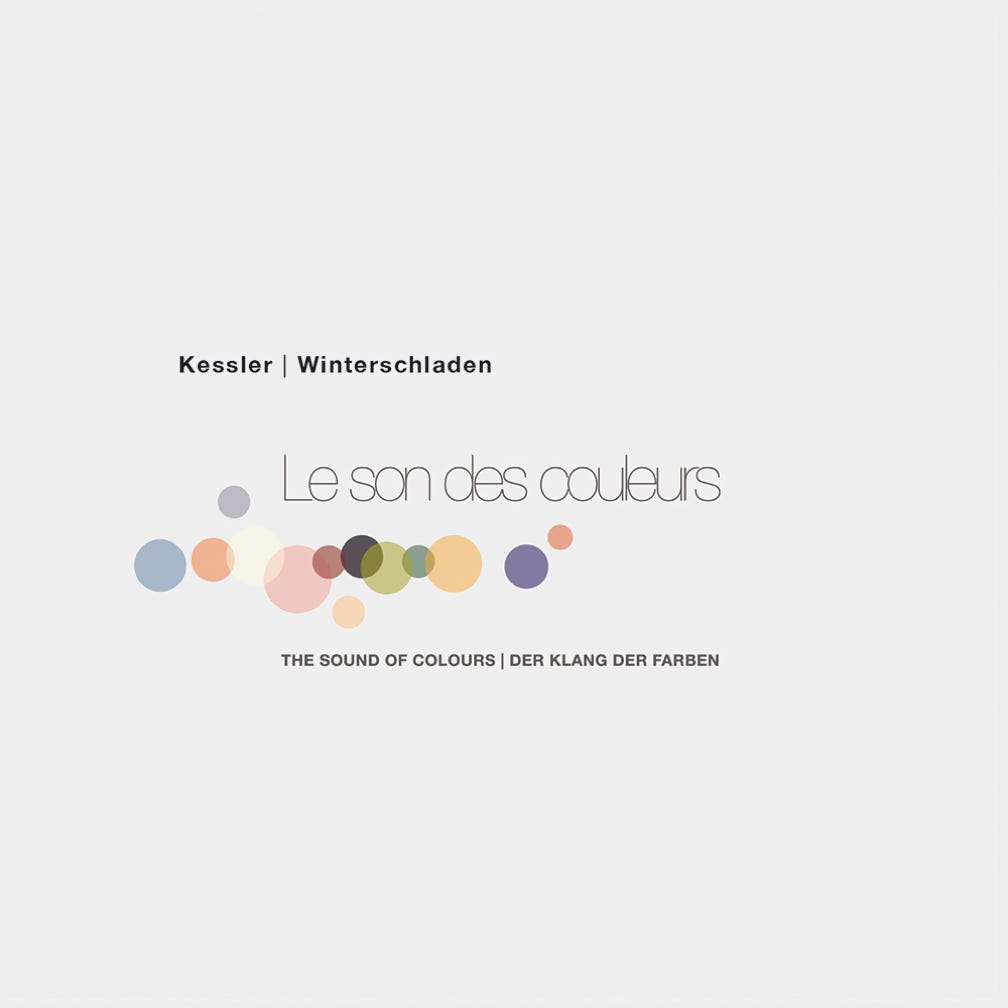LE SON DES COULEURS
Thomas Kessler: The Story Behind
by Benigno-Isagani del Rio
„As a child I was to be found painting most of the time, immersed hours on end in a fascinating realm of form and colour. From the very beginning, ‘hearing colours’ was something very natural for me, and with respect to this idiosyncracy and to yet other such synesthesiac tendencies, little has changed in the course of my life.
Even today, whereas analytic listening ‘tastes’ like hard work to me, imagery comes effortlessly, practically of their own accord. Upon closing my eyes when listening to music I do not envision people playing instruments but colours moving in abstract mindscapes. Thus I came upon the idea of switching around the delightful conceit of ‘hearing colours’ to developing music based on colour impressions.
In the course of my search of tangible points of departure I recalled my time as a student of Architecture, where I fixed upon Le Corbusier’s theory of colour, “Les claviers de couleurs” – the ‘colour keyboards’ – which I had encountered then.
This was most probably because of the reference to music (i.e the ‘keyboards’) in the name of Le Corbusier’s conceptual masterwork. Browsing through my library after that, I actually found a collection of his colour cards, hand-painted with the original pigments. These displayed an inherent and almost hypnotic vibrancy and intensity of hue, especially in connection with sunlight.
Thus I found an ideal foundation to build upon. Subsequently, I observed a daily ritual which initially consisted of spending some time in complete silence in my recording studio. Later, upon this substrate of a nearly Zen-like void, the first notes emerged like stars coming out of a depthlessy blue twilight sky. On my note stand, there were no music sheets – just pages from the Le Corbusier Book of Colours.
Enter Bernd Winterschladen.
I explained my concept to him and played him my first ‘aural’ sketches. Bernd was instantly enthusiastic. His wide-ranging experience gleaned from numerous projects where he combined music with other art forms such as Literature and Drama was to be an enriching and empowering contribution to our joint endeavour, whose prelude took the form of intense exchanges regarding our feelings towards specific colour tones we’d painstakingly select.
Le Corbusier’s account of his own selection process became our key inspiration in our labours to translate colour into sound: “The brush or the spatula in hand, I confined myself exclusively to what I felt, without forgetting that Mr Chevreuil, in his time, had created more than ten thousand nuances!”
This pronouncement enjoined us to preserve the spontaneous character of our compositions, then what brings to bear on colour composition applies in equal measure to the fitting rendition of colour into music.
The judicious and for all intents and purposes time-consuming process of selection from an initially limitless diversity of possibilities leads ultimately to focussing upon essentials. In comparison, the actual recording sessions were concluded swiftly and effortlessly.“ 111
back >
“Les claviers…
… de couleur“ – the ‘colour keyboards’ are a key element of the life’s work of the renowned French-Swiss architect
The first collection of 43 shades of colour was conceived by the grand seigneur of modern architecture in 1931.
In 1959, a second, supplementary array of 20 solid colours adapted to the changing conceptions of the time were added to the first ‘keyboard’.
On the basis of his experience as architect and painter, Le Corbusier arranged the shades of colour shown on individual cards in such a manner as to permit three to five colours respectively to be isolated or combined with one another with the aid of a sliding template. Each card presents a unique colour mood intended to create a specific atmosphere in a room.
With this, Le Corbusier created not only a useful tool but a new canon for puristic colour theory.
The impact of this doctrine upon the history of architecture is seminal and profound.
Up to the present day, the fundamental precepts for the treatment of colour and effect, Corbusier’s “Polychromie Architecturale” are accorded legendary status by contemporary architects, designers and artists. The enduring currency and validity of the “Polychromie Architecturale” to all possible matters of style and taste has proven itself throughout the decades.
Reference and suggested reading:
Le Corbusier “Polychromie Architecturale”,
Arthur Rüegg (Ed.), copyright 2006 Birkhäuser Verlag, Basel

